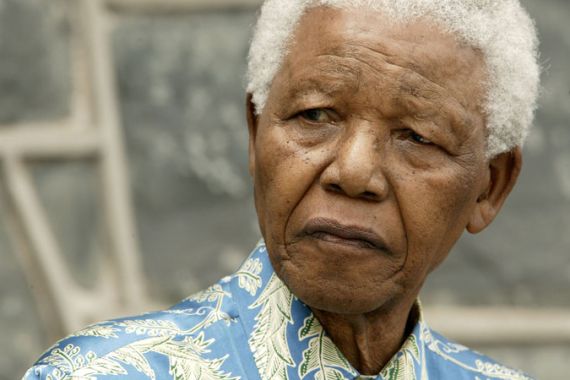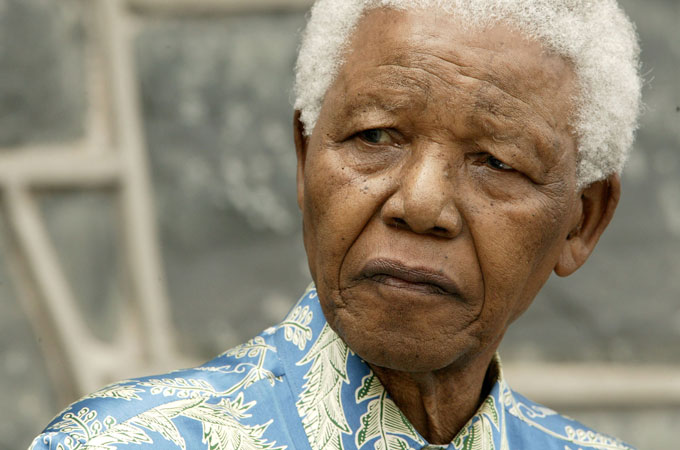Understanding black power in South Africa
Seventeen years after apartheid, the black power movement remains strong, countering ongoing race issues.

 |
| African leaders of resistance against apartheid were either jailed, exiled, or murdered [GALLO/GETTY] |
It is now 35 years since the children of Soweto faced the apartheid monster with their bare hands and turned the tide of history to hasten the coming of liberation. It is almost impossible to imagine the great moment of Nelson Mandela marching, hand in hand with Winnie Mandela, into liberty without the great mass insurrection of 1976. This uprising must be the most important day in the liberation calendar of South Africa. In many ways, the current Arab Spring revolt has many similarities with the Soweto June 16, 1976, uprising. Properly conceived, the June 16 rebellion changed everything.
It must be remembered that before the uprising, the apartheid government seemed to have succeeded in suppressing any serious challenge to itself. The 1963 Sharpeville massacre had sent a loud and clear message to any would-be black resistance that the apartheid state would kill en masse anyone who dared to challenge white supremacy. The Sharpeville massacre drove a debilitating fear in the hearts of black people; this scenario was further buttressed by the banning of the main political parties of black resistance such as the African National Congress (ANC) and the Pan Africanist Congress of Azania (PAC).
Apartheid and suppressing liberation
It was in this background that Steve Biko, the revolutionary and king of black consciousness philosophers, emerged and said: “The black man we have today has lost his manhood.” Up to that point, fear was the key determinant of South African politics, as Biko said. The state of the banned and exiled political movement was by and large dismal. Hope for change had diminished, Mandela and other leaders were either in jail, exile or murdered. It was a little like the forces of evil had triumphed over good. It was simply impossible to imagine liberation.
As if that was not enough, the apartheid government announced a policy of imposing Afrikaans in black schools as a medium of instruction. This was like spitting in the faces of an oppressed people. Since 1948 with the introduction of apartheid, best described by its architect Dr Henrick Verwoerd, there was an overt state policy that black people were to be educated only to be “hewers of food and fetchers of water”. Since then, Afrikaans had been seen as the language of the oppressor. The idea of introducing Afrikaans was therefore correctly seen as the last act of dispossession and oppression by the black majority. But the apartheid state had miscalculated badly. For almost ten years prior to 1976 there was a new movement growing right under the noses of the apartheid system, led by Steve Biko.
It is not possible to understand why a people that was oppressed that much and had sheepishly come to accept its fate, would one morning rise up and throw away the weight of fear and confront apartheid like it happened that fateful morning of June 16, 1976. The popular narrative is that the children spontaneously embarked on a peaceful demonstration against apartheid. This is not entirely true; the uprising had leaders and clear slogans and philosophy.
The students cried: “Black power!” as they threw themselves against the bullets of the apartheid state. Consequently, the uprising was known as “black power”. The whole thing was led by the late Tsietsi Mashinini – at the time not even 18 years old. He was a high school student and member of the South African Students Movement (SASM), a formation affiliated to Steve Biko’s Black Consciousness Movement.
Understanding black power
In the aftermath of the uprising, more than 500 children were murdered by the apartheid state. The world remembers that day through the picture of the dying 13-year-old Hector Peterson, held in the arms of Mbuyisa Makhubo – who has since disappeared in exile under ANC “care”. It’s really strange that Makhubo is gone and there is no particular interest to find him by a government that was brought to power by the efforts of young people like him. In some ways we can say that South Africa was liberated by children, because even the second wave of resistance of the 1980s – which gave the apartheid monster the final push – was a rebellion led by youth.
One of the key figures to remember when trying to understand the genesis of the black power movement in South Africa – and the June 16 moment – is Abram Okgopotse Tiro, a close friend of Steve Biko and president of the student representative council at the University of Limpopo (formerly Turfloop). In the 1972 graduation ceremony at the university, Tiro gave a historic speech that set the campus ablaze and saw him expelled and forced to teach at a school in Soweto. He chose to teach history of black resistance and awakened the consciousness of his students, including one of the most brilliant of his students, Tsietsi Mashinini, who was to become the brave, articulate leader of the uprising. Tiro himself was brutally murdered by a parcel bomb in Botswana in 1974. When the bomb that killed Tiro exploded, it was a little too late – his teachings and example had already spread far and wide and deep in Soweto.
So when the children of Soweto cried “Black power!” they were simply being true to the teachings of black consciousness and its message of self reliance and dignity in resistance and desire for total liberation against all odds. Biko has emphasised that the “most potent weapon in the hands of the oppressor is the mind of the oppressed”. Freed from mental slavery, the children defied both government and parents.
Equality remains a dream
The question that must be asked 35 years later, with 17 years experience of liberation, is this: Has the dream of the children of Soweto for a dignified, quality education for all been realised? The answer is a big, sad “no”. The report produced by the South African government a few weeks ago shows a sorrowful picture in terms of the education system for blacks, the same goes for poverty and health care and employment. It is like we now live under a new apartheid reality – only now managed by blacks who fought against white-driven apartheid. The irony of the African post colony is also real in South Africa.
Luckily, new movements are emerging to claim the true spirit of 1976, such as the September National Imbizo(SNI), with its “Politicians and public servants: Use public services” campaign. The SNI correctly claims that it is only when our politicians, public servants and their dependants are forced by law to use public services will the conditions of people also change. In Africa there is an idiom and practice that the one who organises a feast must eat first in the view of all, so that all know that what is being served is good for all – and the host thereby demonstrates confidence in the offering. Likewise, public servants and politicians are guardians of our public services, let them be the first to use them.
On June 16, the SNI – together with other community organisations and churches – staged a march titled “from Alex to Sandton – from Hell to Heaven”. Alexandra is one of the most depressed and neglected townships in South Africa, but a stone-throw away lies the richest white suburb of Sandton, where some of the most prominent black political figures now live. The spirit of June 16, 1976 will not rest until true equality and dignity is realised. Now we can say the struggle continues in South Africa.
Andile Mngxitama is a leading black consciousness thinker and organiser. He co-edited Biko Lives! Contesting the Legacies of Steve Biko, and published four essays in the New Frank Talk journals.
The views expressed in this article are the author’s own and do not necessarily reflect Al Jazeera’s editorial policy.
